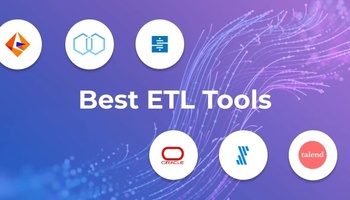Redshift has had the highest market share of any RDBMS (Relational Database Management System) solution for a number of years. Companies around the world use it to store and mine deeper insights from data. What is Redshift exactly, and what are the benefits that have given it the top ranking for companies around the world?
Redshift Architecture
Amazon Redshift is a relational database query and management system. It integrates with both BI (business intelligence) and ETL (extract, transform and load) tools in order to develop actionable insights from data. Redshift is a top-level solution for large volumes of data, and it has some unique architecture to make this possible.
A Redshift data warehouse's main component is a cluster made up of leader nodes, for external communication, and compute nodes. Leader nodes also assign work to the compute nodes. Compute nodes divide into slices, which process part of whatever data the leader node assigns. Redshift relies on massively parallel processing to optimize query speed. It also features columnar data storage.
Top Redshift Features
Some of the top features of Redshift include:
- Automatic data compression. Redshift compresses data automatically to diminish required storage.
- MPP (Massively Parallel Processing)-aware query optimizer. You can enhance even highly complex queries through the use of the built-in query optimizer.
- Optimized and compiled code. Leader nodes in Redshift only send optimized, compiled code to compute nodes. This removes any necessity of an interpreter and further increases query speed.
- Full and constant encryption. Redshift provides a wide range of options for encryption and compliance, allowing you to adhere to the highest standards of data security.
- Amazon Redshift ML. Analysts can apply Amazon Redshift ML, powered by Amazon SageMaker, to create machine learning models instead of requiring a data scientist to develop custom models.
- Decoupled storage and compute with RA3 nodes. As a fairly recent addition, RA3 nodes have been a useful change to allow storage and computing to scale independently.
Some have mentioned that Redshift has a fairly steep learning curve for ETL because of its complex architecture and a wide variety of high-level features. That is where a low-code ETL platform like Integrate.io comes in. We provide integrations with Redshift and many other top database solutions to help companies perform ETL quickly and painlessly.
Benefits of Redshift
Amazon Redshift is clearly in a class of its own. Here are some of the top benefits that have made it so:
- Connect with AWS. Amazon Web Services is an essential tool for many businesses, and their infrastructure and ecosystem may rely heavily on AWS. Redshift easily and quickly integrates into the ecosystem.
- Excellent price-performance with RA3. According to Amazon, RA3 instances can give you as much as three times better price performance than other solutions. This is because you can pay for storage and compute independently if you need to scale them at different rates.
- Extremely efficient storage. Data compression and columnar storage ensure this.
- Highly advanced ML capabilities. Machine learning models allow users to not only process data but garner benefits from the results.
- AQUA. Amazon Redshift's Advanced Query Accelerator is a relatively recent feature that speeds up some kinds of queries automatically.
- Caching. Redshift caches result so that you can perform repeat queries with incredible speed.
- Highly Scalable. While the costs may be prohibitive for smaller businesses dealing in lower volumes of data, Amazon Redshift offers petabyte-scale data warehousing. It offers a simple GUI (General User Interface) so that you can scale with a matter of a few clicks.
- Sharing data across clusters. Instead of having to copy or move data, you can simply share data across Redshift clusters.
- Fully managed. Let's face it: that is why you pay so much for a high-level database solution. With Redshift, you can rely on Amazon's quality service.
- Automated backups. If you have ever had the incredible frustration of losing data in unfortunate hardware or network failure, you already know the value of the asynchronous replication Amazon Redshift offers.
There are, however, a few cons to the system as well. Some say the GUI is too complex, while others complain of slow query speed in certain instances. Part of this may be because of leaving the full ETL load on Redshift and AWS.
Integrate.io provides a simple drag-and-drop interface and allows you to do all the heavy lifting with our simple-to-use, fast and secure ETL platform.
Redshift ETL With Integrate.io
Redshift has a wide base of users. Considering these benefits, you may be increasingly interested in joining them. Integrate.io makes this easier than ever by helping you build data pipelines and ETL pipelines to transfer data to and from your database solution.
To discover more ways that Integrate.io can help with Redshift ETL, contact us today and receive a seven-day demo of our services.











